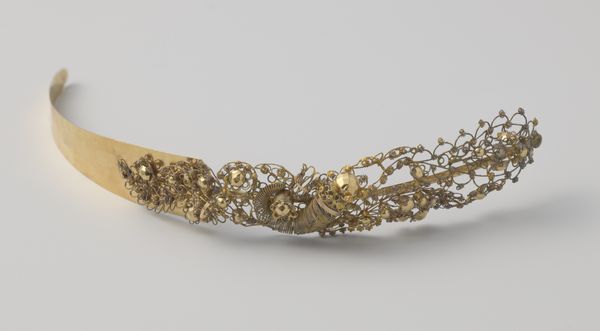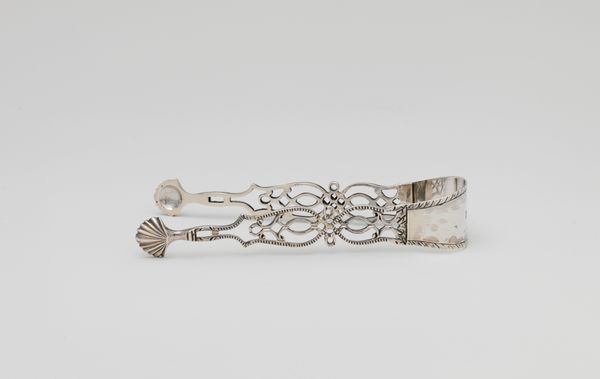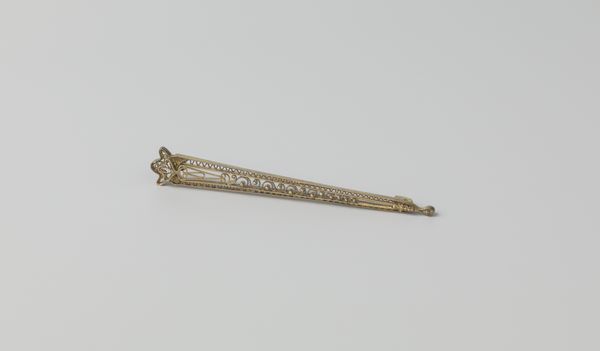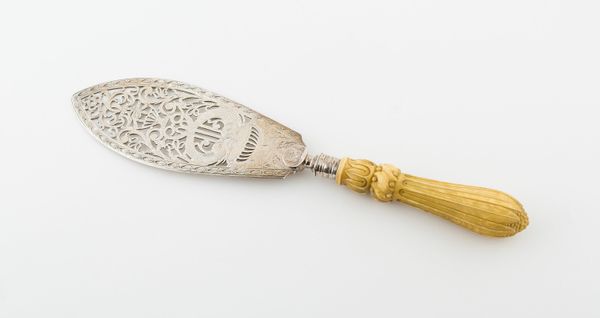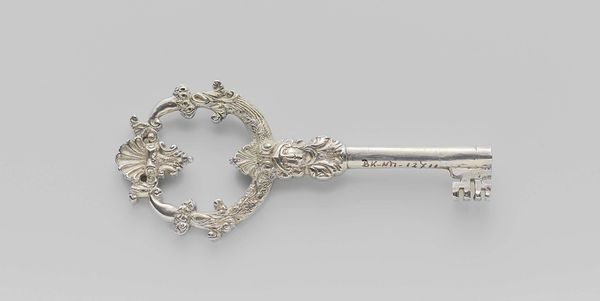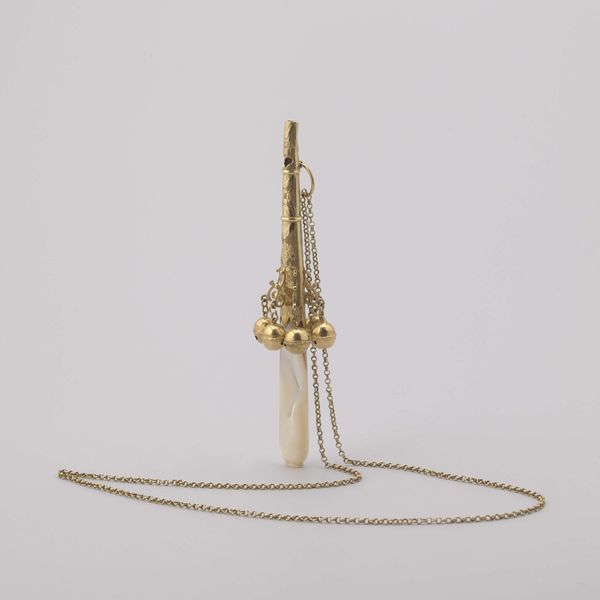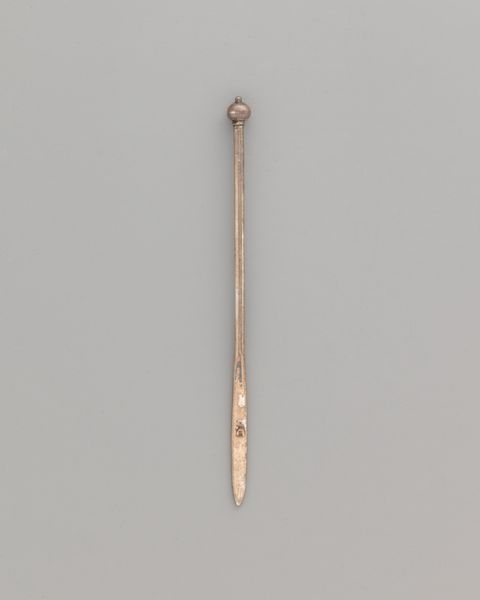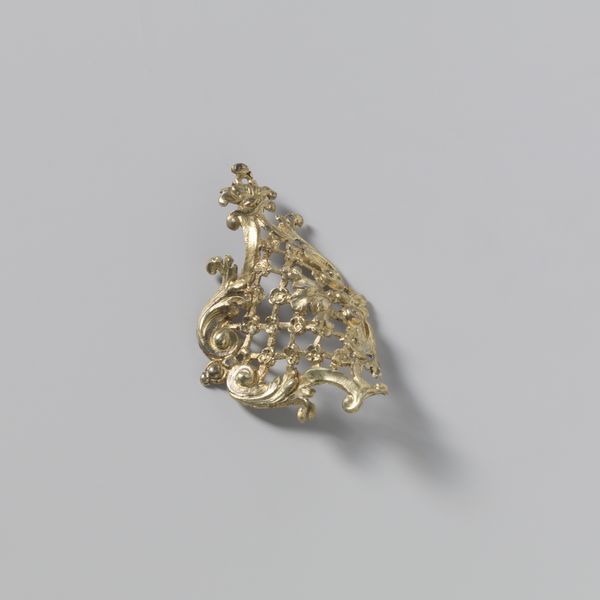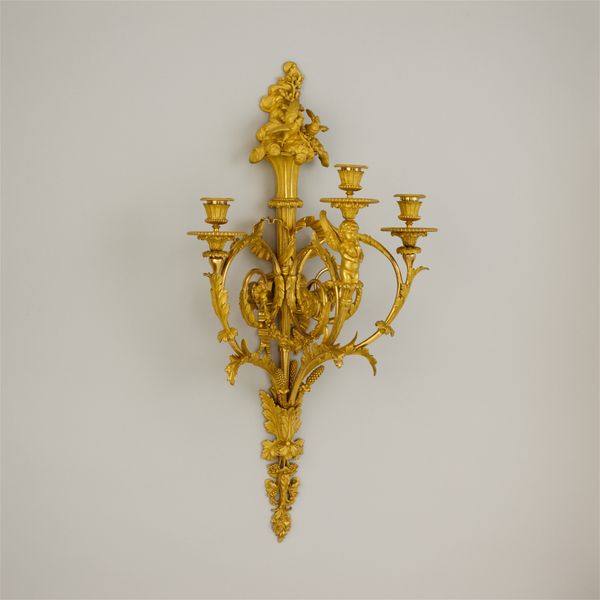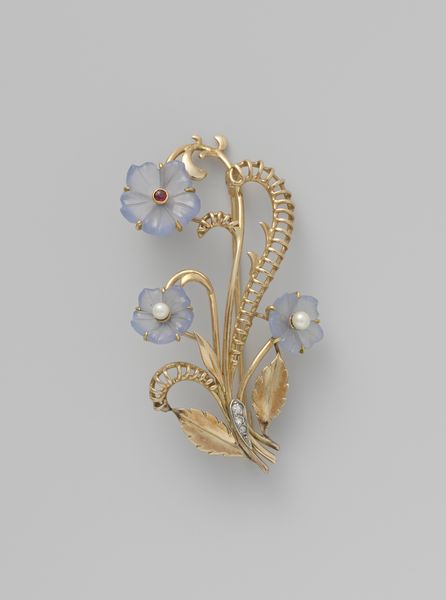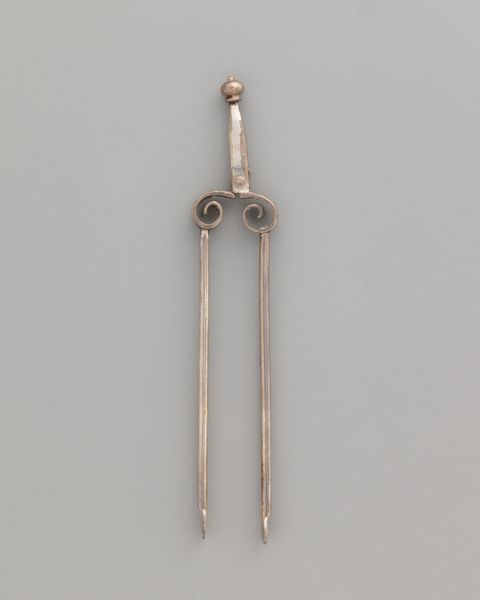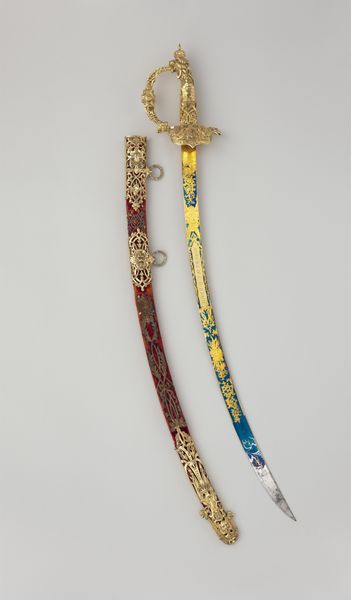
#
3d sculpting
#
3d model
#
wedding photograph
#
3d printed part
#
rounded shape
#
jewelry design
#
virtual 3d design
#
flower
#
round design
#
3d shape
#
bridal fashion
Dimensions: height 12.7 cm, width 3.5 cm
Copyright: Rijks Museum: Open Domain
This lorgnette was crafted by Tiffany & Co., and I’m immediately drawn to the handle, which is just begging to be touched. It's hard not to think about how objects like this are made with such painstaking detail – that's the kind of art where the process is really upfront. You see the way the gold is worked, twisted, and shaped, it's like a drawing in metal, a sketch brought to life. The handle swells at the top, it's an iris bursting with jeweled light, then twisting down like a vine. It makes me think of Art Nouveau, of course, maybe even Gustav Klimt, who also loved to use these intricate decorative patterns. There’s such a tension in this piece between seeing and being seen, between utility and pure ornamentation. It's not just a tool to help you see better; it's a statement. Like a painting, it’s about looking, but it's also about how we frame our own gaze. It makes you wonder, doesn't it, what the wearer was looking for, and what they wanted others to see?
Comments
rijksmuseum almost 2 years ago
⋮
Around 1900 French fashion set the tone everywhere. In the United States, large jewellery houses, such as Tiffany & Co. in New York, were instrumental in disseminating it. Not only did they sell French wares, they also had objects designed locally that emulated the form and decoration of French models. A typical example is this lorgnette, which, when folded, looks like an iris in bloom.
Join the conversation
Join millions of artists and users on Artera today and experience the ultimate creative platform.
